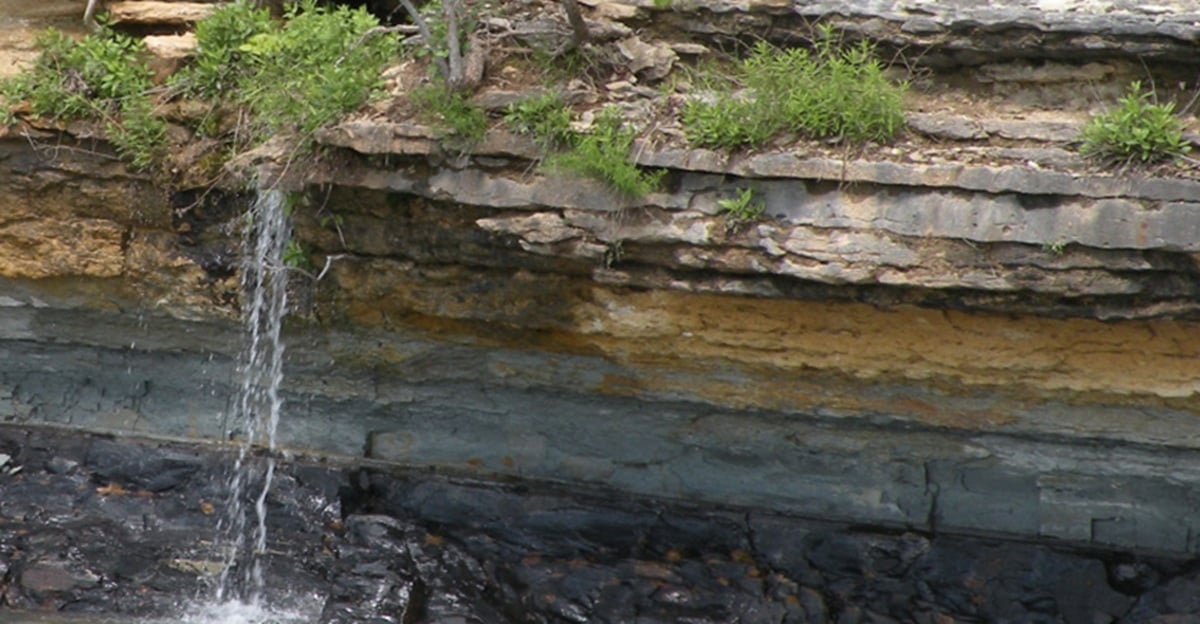Today, it's a scientific consensus that Mars was once a very different place, with a warmer, denser atmosphere and liquid water on its surface. This is evidenced by flow channels, delta fans, lakebeds, and many other features that form in the presence of flowing water here on Earth. Based on the way many of these channels feed into the Northern Lowlands on Mars, scientists speculate that this region was once home to an ocean that covered the northern hemisphere. According to new research from the University of Arkansas, there is a strong case for the existence of this ancient ocean.
This was the conclusion reached by geosciences PhD candidate Cory Hughes, who studies the geology of the Earth to the geological history of Mars. For years, researchers have studied sandstone formations in northwestern Arkansas, which were created by rivers that flowed across the area 300 million years ago. By analyzing images taken by NASA's Mars Reconnaissance Orbiter (MRO), Hughes and his colleagues identified key features in delta fans located in Aeolis Dorsa, a northern region within Utopia Planitia. On Earth, these features are known as "backwaters," which form where rivers narrow before emptying into oceans.
Hugh was joined by John B. Shaw, an associate professor of geosciences and the Vice Chair of the Department of Geosciences at the University of Arkansas, as well as Anjali M. Fernandes and Travis E. Swanson. Fernandes is an Associate Professor of Earth and Environmental Sciences at Denison University, while Swanson is a geoscientist with the Water Institute (a Louisiana-based applied research organization dedicated to supporting coastal and river delta regions). The results of their analysis were published in the journal Geophysical Research Letters.
 *Image of the Edington Sandstone formation, located in northwestern Arkansas. Credit: Office of the State Geologist*
*Image of the Edington Sandstone formation, located in northwestern Arkansas. Credit: Office of the State Geologist*
On Earth, rivers that have no system of levees or human-built barriers shift constantly as they snake across the landscape. The sediment they carry erodes one side, causing the river to bend in that direction while depositing sand and fine dirt on the opposite side, also known as a "channel belt." As a river approaches an open body of water (like an ocean), its velocity will slow down, causing it to carry less sediment. This leads to sediment being deposited, forming river deltas, and causes the channel belt to narrow before it reaches the ocean. This section is known as the "backwater zone," which can extend for hundreds of kilometers.
Over time, gravity will pull the coarsest grains to the bottom of the river, which will become buried if the river dries up. This is believed to have been what happened on Mars billions of years ago after the planet's atmosphere was slowly stripped away by solar wind (owing to the disappearance of its magnetic field). When rivers dry up, heat and pressure will turn the sediment in the riverbeds into sandstone deposits. On Earth, tectonic activity pushes this stone to the surface, where wind and rain erosion eventually leave behind a ridge known as "inverted channel" (or "inverted ridge").
This is what took place in northwestern Arkansas roughly 300 million years ago, when a river that ran from modern-day Indiana flowed into a sea that covered central Arkansas. When the ancient river dried up, what resulted was the Wedington Sandstone formation, the only known example of an inverted river delta on Earth. The presence of similar ridges and channel belts on Mars provides direct evidence that rivers once flowed there that emptied into an ocean that covered the northern hemisphere. However, since Mars lacks plate tectonics, its inverted ridges likely formed when finer deposits around the sandstone were eroded.
"This is a large-scale process taking place, which is why we're able to see it from space on Mars," said Hughes. "These are very mature deltas. This is a strong point in favor of an ancient ocean, or at the very least a large sea." Back in January, Hughes, Shaw, and the Department of Geosciences at the University of Arkansas hosted a conference attended by 12 planetary scientists from NASA's Jet Propulsion Laboratory, the Planetary Science Institute (PSI), the University of Texas, and Stanford University. As part of the conference, attendees visited the Edington Sandstone formation to observe its similarities to the Aeolis Dorsa region.
As Shaw noted, this latest piece of evidence of Mars' warmer, watery past also bolsters the case for the existence of life on Mars at one time. "We don't know of any lifeforms on Earth, or anywhere in the universe, that don't require liquid water, he said. "So the more liquid water we have on Mars, a simple argument could be made that you have a higher chance of life."
Further Reading: UArk, Geophysical Research Letters

